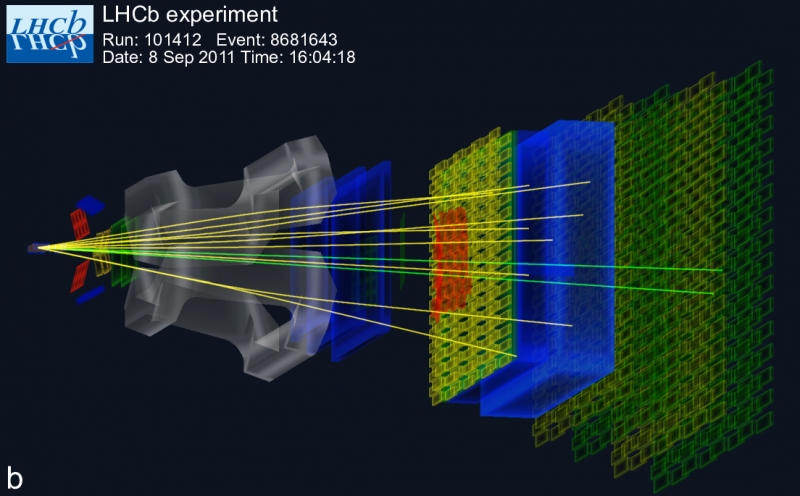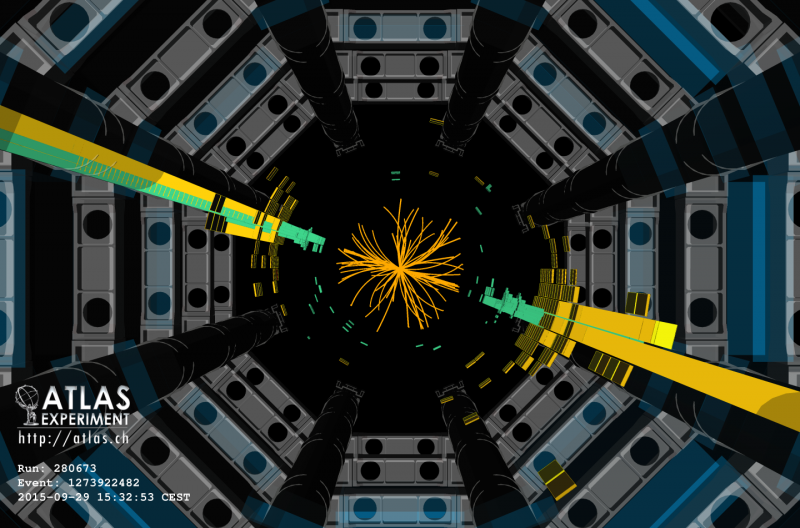2015: the year that saw the restart of collisions at the world’s largest particle accelerator and the return of the particle hunters to their lookouts. We take a look back at some of the year’s highlights at CERN.
January
- After two years’ work on CERN’s entire accelerator complex, the team in charge of the colossal Long Shutdown 1 project hand back the symbolic key to the Large Hadron Collider to the scientists who "drive" the machine. The LHC and CERN’s other accelerators were renovated and upgraded ready to be restarted at a higher energy.

February
-
The final preparations are made for the restart of the world’s largest particle accelerator and its experiments. CMS installs a new detector inside its experiment, improving its ability to capture the secrets of matter…

March
- ATLAS and CMS present their combined results on the mass of the Higgs boson for the first time. In September these results are supplemented by other combined measurements of the properties of the famous boson discovered in 2012. LHCb continues to put the standard model through its paces with new precision measurements.
April
-
Eight months before Star Wars returns to the big screen, CERN confirms the existence of the Force... it's April Fools’ Day again! Our joke quickly goes viral…

-
The Force is strong with the Large Hadron Collider, which restarts on 5 April to cheers all round. After a shutdown lasting almost two years, protons are once again circulating in the world’s largest particle accelerator.

May
- LHCb and CMS observe for the first time a rare particle decay predicted by the Standard Model. Their combined analysis sets new limits on the theories for Beyond-Standard-Model physics.

-
CERN continues to pursue its enlargement policy. In May, the Republic of Turkey becomes an Associated Member State, ratifying the agreement signed the previous year. In July, Pakistan follows suit, also becoming an Associate Member State. Meanwhile, the United States signs a new framework agreement with CERN, allowing their long-standing collaboration to continue.
June
- The LHC pushes back the frontiers of physics with collisions at an unprecedented energy of 13 TeV. On 3 June, physics data-taking restarts at the LHC experiments.

July
- The particle hunters at the LHCb experiment capture a new class of particle, the pentaquark, for their menagerie. As its name suggests, the pentaquark consists of five quarks, assembled in a configuration that had never been seen before.

August
- The mysteries of antimatter continue to intrigue the physicists as they make ever more precise measurements of its properties. In August, the BASE experiment publishes a very precise comparison of a property of the proton and the antiproton, the corresponding antimatter particle. A few days later, the ALICE experiment publishes a similar measurement of light nuclei and the corresponding antinuclei.
September
- SESAME, the synchrotron project in the Middle East, reaches an important milestone. A complete cell of magnets for the accelerator is assembled and tested at CERN. A month later, the first magnets are sent to Jordan.

- Two teams of secondary-school pupils, the lucky winners of the Beamline for Schools competition, see their dreams come true as they arrive at CERN to carry out their experiments.
October
-
2015 is the International Year of Light, and in October the High Luminosity LHC is in the spotlight. After four years of study, this major upgrade project for the LHC, due to start after 2025, enters the development and construction phase.

-
CERN organises its third TEDxCERN conference with the theme “Breaking the rules”.

November
- After the protons, the LHC accelerates lead ions to unprecedented energies. For three weeks, the accelerator runs with heavy ion beams to recreate the conditions of the first moments of the universe inside the experiments.

- A new accelerator comes to life. Linac4, the linear accelerator destined to become the first link in CERN’s accelerator chain, accelerates beams to 50 MeV.

December
- The ATLAS and CMS experiments unveil their results using data collected in 2015 from proton collisions at an energy of 13 TeV.


-
During the open session of the CERN Council, Rolf Heuer, who has led CERN for seven years, hands the reins to Fabiola Gianotti, the new Director-General as of 1 January 2016.
